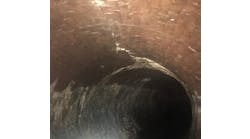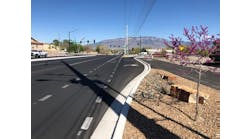In Ann Arbor, Michigan, stormwater typically drains into a
network of more than 500 stormwater management systems (“county
drains”) that are overseen by a Washtenaw County Drain Commission. These
drains provide stormwater management, flood prevention and stream protection
for urban and rural land in the county.
Ann Arbor, a densely populated university town of 180,000
(during the academic year), has been seeing an increase in urban redevelopment
pressure in recent years as developable land has become scarce and land values
have risen. The city of Ann Arbor has worked closely with the County Drain
Commissioner’s office to use this redevelopment as an opportunity to
improve the quality of stormwater flowing into the county drains.
Late last year, an Ann Arbor developer received a permit to
build a new mini-storage facility on a site that had three exiting buildings.
The site was on a congested four-lane road near the University of Michigan, one
of the major routes into downtown Ann Arbor. According to general contractor
Steven Lucchesi of Steven J. Lucchesi, Inc., the existing buildings on either
side of the site would stay intact, but adding a new building to the site
required that the overall systems serving the site, including water and sewer,
be upgraded. The city’s stormwater ordinances require that stormwater
runoff from any newly created impervious surface be captured and detained on
site, and then treated prior to discharging into the city’s stormwater
system.
“We were adding a 5,000 square foot building, which
meant that there would be about 30,000 square feet of surface area
runoff,” said Lucchesi. “In addition to a retention/detention
system, the city asked us to install a swirl chamber to help clean the water
before pumping it into the exiting sewers.”
The ordinance
requires that the treatment system remove 80% of Total Suspended Solids (TSS)
or more, and that the system’s performance be verified by testing. The
city also required that the system be accessible for maintenance and removal of
trapped pollutants.
The site of the new building was a tight one, only 100 feet
wide between the two existing buildings, and did not allow for a large
excavation to install a stormwater treatment system.
Although another system had originally been specified, these
site constraints caused the project engineer to change the specifications to a
Vortechs System Model 1000, an oil and grit separator that treats a flow rate
of up to 1.6 cfs. Manufactured by Vortechnics, Inc. of Portland, Maine, the
Vortechs System uses a patented vortex process to remove 80 percent or more of
Total Suspended Solids (TSS) including trash, oil, grit and hydrocarbons from
stormwater runoff. The Washtenaw County Drain Commission allows the Vortechs
System as an approved best management practice (BMP) for stormwater treatment,
so the last minute change did not affect permitting or slow down the tight
construction schedule.
To install the Vortechs System, Lucchesi needed to
manipulate his machinery onto the site, excavate a hole, and set the precast
unit in place. Because the system is horizontal in design and has a shallow
profile, it required only a ten-foot deep hole on the site for installation.
Other stormwater treatment systems can require depths of up to 18 feet to
accommodate their vertical configuration.
“A Vortechnics sales engineer showed up the day of the
installation, and really helped solve a few issues before they became
problems,” he said.
“In Ann Arbor, we are installing more and more of
these types of units. The city is requiring them on all new development, even
if the site dumps into open detention areas,” said Lucchesi.
The process took about a day from start to finish, far less
than he had anticipated.
For additional information, contact Vortechnics at
207-878-3662.


